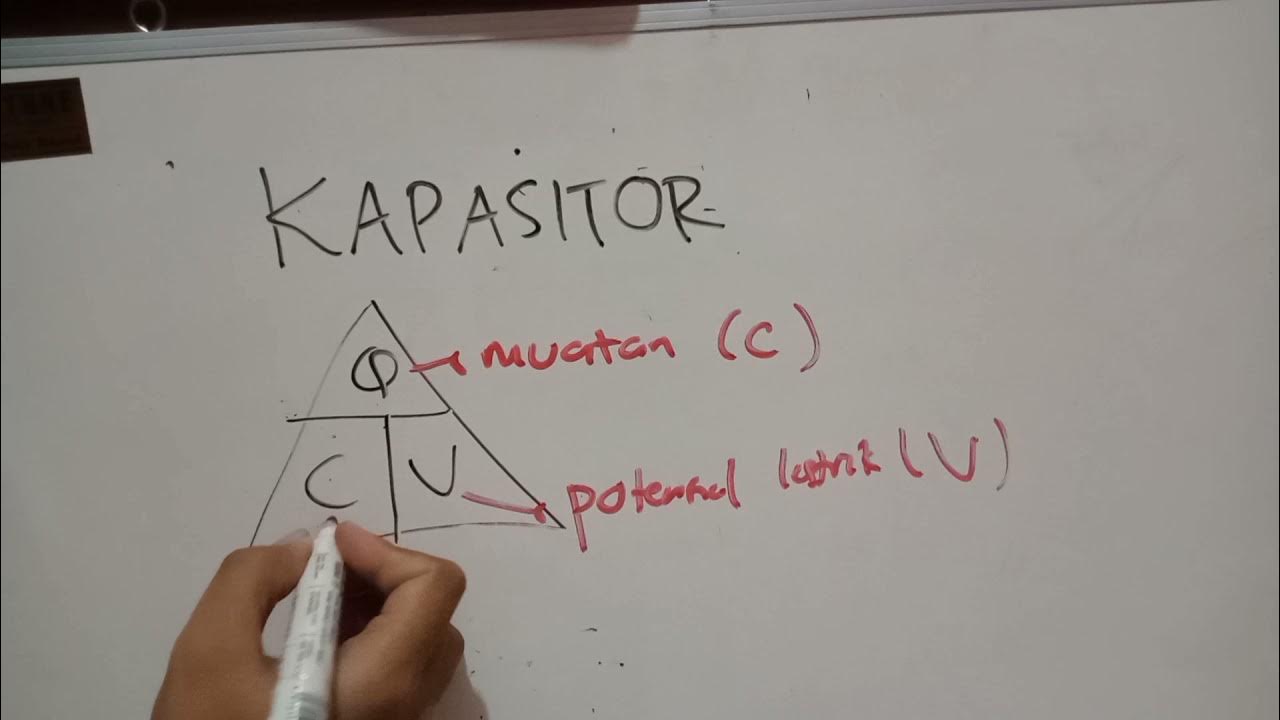F86 - Kapasitor : Penurunan rumus kapasitansi,potensial listrik dan energi listrik
Summary
TLDRThis video explains the principles of capacitance in capacitors, particularly focusing on parallel plate capacitors. It details how charge is stored when a DC voltage is applied, the electric field generated between the plates, and the relationship between electric potential and electric field. The video derives the formula for capacitance using Gauss's law, introduces the concept of dielectric materials, and discusses the energy stored in capacitors. Key formulas are presented, highlighting the factors affecting capacitance and energy density, making complex concepts accessible for learners.
Takeaways
- 😀 Capacitors store electrical energy by separating positive and negative charges on parallel plates.
- 😀 The electric field between capacitor plates is determined by charge density (σ) divided by the permittivity of free space (ε₀).
- 😀 The potential difference (V) across the plates relates to the electric field (E) and the distance (d) between them.
- 😀 Capacitance (C) is derived from the relationship between charge (Q) and voltage (V), expressed as C = Q/V.
- 😀 The general formula for capacitance is C = ε₀(A/d), where A is the area of the plates and d is the separation distance.
- 😀 In the presence of a dielectric material, the formula for capacitance becomes C = ε(A/d), where ε is the material's permittivity.
- 😀 Energy stored in a capacitor is given by the formula W = 1/2 CV², where W is energy, C is capacitance, and V is voltage.
- 😀 The energy density (energy per unit volume) in a capacitor is derived from the stored energy and the volume of the capacitor.
- 😀 The capacitance can increase significantly when a dielectric material with a high dielectric constant (κ) is used.
- 😀 Understanding the relationship between charge, voltage, and capacitance is essential for analyzing electrical circuits involving capacitors.
Q & A
What is capacitance and how is it defined?
-Capacitance is defined as the ability of a capacitor to store charge per unit voltage. It is calculated using the formula C = ε₀(A/d), where ε₀ is the permittivity of free space, A is the area of the plates, and d is the distance between them.
How does a parallel plate capacitor function?
-A parallel plate capacitor consists of two conductive plates separated by an insulator. When a DC voltage is applied, one plate becomes positively charged and the other negatively charged, creating an electric field between them.
What is the significance of the electric field in capacitors?
-The electric field between the plates of a capacitor influences the behavior of charges. It is directed from the positive plate to the negative plate and is crucial for understanding how voltage and capacitance relate.
What role does Gauss's Law play in analyzing capacitors?
-Gauss's Law helps derive the electric field between the plates of a capacitor by relating the electric flux through a closed surface to the charge enclosed, allowing us to calculate the field based on charge density.
How do dielectrics affect capacitance?
-Inserting a dielectric material between the plates increases capacitance because the dielectric reduces the electric field strength, allowing more charge to be stored at the same voltage.
What is the formula for the energy stored in a capacitor?
-The energy (W) stored in a capacitor is given by the formula W = 1/2 CV², where C is the capacitance and V is the voltage across the capacitor.
What is the relationship between charge, voltage, and capacitance?
-The relationship is defined by the equation Q = CV, where Q is the charge stored in the capacitor, C is the capacitance, and V is the voltage across it.
What is the concept of energy density in capacitors?
-Energy density is defined as the energy stored per unit volume in a capacitor. It is calculated using the formula u = W/V, where W is the stored energy and V is the volume of the capacitor.
What happens to the capacitance when a dielectric material with a high dielectric constant is used?
-The capacitance increases significantly when a dielectric with a high dielectric constant is used because it allows the capacitor to store more charge at the same voltage.
Why is understanding the principles of capacitors important in electrical engineering?
-Understanding capacitors is essential for designing circuits, managing power supply stability, and energy storage systems in various applications, including filtering, timing, and signal processing.
Outlines

This section is available to paid users only. Please upgrade to access this part.
Upgrade NowMindmap

This section is available to paid users only. Please upgrade to access this part.
Upgrade NowKeywords

This section is available to paid users only. Please upgrade to access this part.
Upgrade NowHighlights

This section is available to paid users only. Please upgrade to access this part.
Upgrade NowTranscripts

This section is available to paid users only. Please upgrade to access this part.
Upgrade NowBrowse More Related Video
5.0 / 5 (0 votes)





